Ships have been sailing the seas for thousands of years, and with modern technological advances and innovation, the industry continues to improve and innovate. While in 1912 the Titanic hit an iceberg that it couldn’t detect, today, connected devices, modern radar, sonar, data and GPS equipment are able to show where obstacles lie and re-route any ship onto a safer path, whether it’s carrying holidaymakers, LNG or cargo.
Just as connected devices are making headway on land, with computer chips in cars, buildings and everyday items such as watches and fridges, connected ships are growing in popularity at sea thanks to their ability to streamline and improve marine operations.
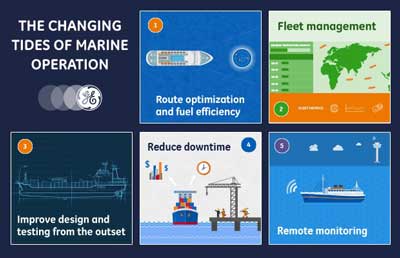 Image courtesy: GE Power Conversion
Image courtesy: GE Power Conversion
While it could be said that more is being done to integrate and adopt digital technologies in the consumer space, we have to recognize the strides that the marine industry has taken—from introducing automation and control system to implementing real-time fleet tracking. It’s also vital to note that a consumer device, whether that be a car, fridge or watch, is a completely different beast from a 150,000 ton ship, so the two worlds can’t move at the same speed. However, the key benefits of connected components remain the same no matter what industry we are discussing. This is why forward-looking fleet operators are investigating using advanced software analytics to harness data and provide insights into enhance operations.
Here we outline the five key benefits of implementing digital operations aboard a vessel:
Route optimization and fuel efficiency
Gone are the days of looking to the sun, moon and stars to navigate ships across the deep sea; now navigation is not a leap of faith, it’s a science. Each modern vessel, whether an offshore drill ship, cruise liner or LNG carrier, is fitted with a digital navigation system, which can not only identify the quickest routes in advance, but can also spot obstacles and re-route ships on a safer, or calmer, path when necessary.
This is crucial for the safety of the crew and also for reducing fuel consumption. It’s no secret that both fuel saving and optimizing operations have been the main drivers of introducing digital technology into a fleet because in some cases, fuel costs account for up to 40 percent of total operational expenses. Use of technology has the ability to reduce this figure as predictive analytics tools can bring in weather forecast data to optimize route planning, manage propulsion levels and reduce overall fuel consumption.
Fleet management
Fleets are growing in size, and vessel operators may have hundreds of ships out at sea at any one time. Keeping track of all these ships at once may not be simple, but that knowledge provides an advantage to operators. By looking at an entire fleet, not just at each vessel in a silo, operators can automatically check operating performance against other ships, highlighting anomalies or inefficiencies aboard a specific vessel, which might indicate the need for upgrades, operational tweaks or repairs. Digital technologies are revolutionizing and simplifying this process, and it’s not just fleet operators that are responsible for spotting potential issues; the use of predictive analytics systems also allows GE experts from around the world to compare operational statistics and data against other fleets, providing a greater pool of data from which they can draw insights. This allows GE to use its wider global visibility to provide support at scale, spot trends, increase the reliability of a fleet and provide crucial information for decision support.
Improve design and testing from the outset
The use of data and predictive analytics is not just crucial when a ship is at sea, but also in its design phase. Combining decades of experience, software modellng tools can analyze a vessel’s anticipated operational profile, optimizing the design from the offset. It has the ability to test the performance of a ship’s systems against mathematical models and against different combinations of weather and other marine conditions to assess and refine vessel performance.
Used during the shipbuilding process, software analytics can also provide fast, real-time comparisons of the performance of different electrical configurations, enabling improved design and configuration of electrical solutions and estimating the annual running costs incurred by the vessel design, so equipment selections can be made to reduce fuel consumption and achieve further savings.
Reduce downtime
Unanticipated outages on board vessels can cost serious money. In fact, unplanned downtime for a drillship can end up costing up to $12 million per year. However, predictive analytics tools, such as GE’s SmartSignal software, can identify impending equipment failures before they happen, reducing unplanned downtime.
A digital model, called “the digital twin,” can be built based on years of a vessel’s data history. By comparing asset to asset and vessel to vessel with “the digital twin,” the software is able to search for anomalies and give early warnings of a potential failure, enabling the industry to shift from planned to condition-based maintenance.
Remote monitoring
The use of data allows companies to monitor vessels in real time, record and analyze their histories and search for anomalies. Software and connectivity can bring the issues encountered on board a vessel to the experts on shore, allowing issues to be resolved more quickly and helping to reduce third-party cost.
What’s more, the use of predictive analytics also helps address a global skill shortage. Few vessel operators have access to sufficient qualified engineers to be able to deploy experts in every system aboard every vessel. As such, being able to resolve issues from the shore can significantly enhance operations and reduce the number of engineers needed without sacrificing safety or operational performance.
There will be many large employers that risk losing 50 to 80 percent of their retirement-eligible population in the next five years. The use of analytic tools also allows knowledge and insights to be stored, capturing and retaining some of the experience that would otherwise be lost when personnel retire. It enables good practices to be repeated and scaled across the fleet—again, a key contributor to bridge the skill gap.
The marine industry is continually evolving to reflect a dynamic and ever-changing world. However, while there has been a tidal wave of innovation over the last decade, there is still a ways to go. This is why GE’s Marine Solutions is helping marine companies enhance efficiency, cut carbon emissions, increase productivity and enable smarter operations through use of digital technologies. Navigating through choppy waters is no easy task, and marine operators need expert support to help sail through the economic tempest we’ve seen over the last few years.
By Tim Schweikert
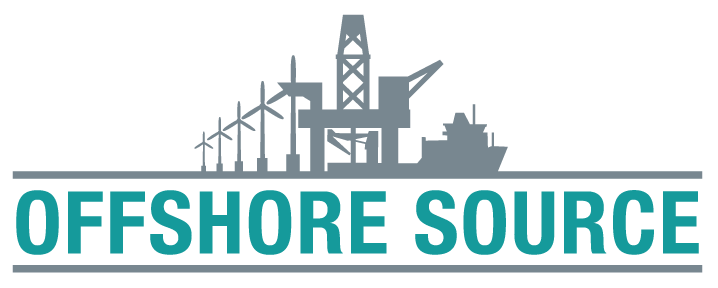
 Seventy one accounts of incidents that took place in 2014 on 54 vessels were submitted for the annual ‘Dynamic positioning station keeping incidents: Incidents for 2014’ (M 231) report produced by the
Seventy one accounts of incidents that took place in 2014 on 54 vessels were submitted for the annual ‘Dynamic positioning station keeping incidents: Incidents for 2014’ (M 231) report produced by the 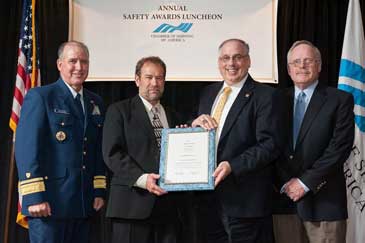 Capt. Seven Gilkey, master, USNS Invincible and T-AGOS / T-AGM Port Captain and Program Manager, Capt. Jonathan "JC" Christian, accepting the awards on Crowley's behalf.
Capt. Seven Gilkey, master, USNS Invincible and T-AGOS / T-AGM Port Captain and Program Manager, Capt. Jonathan "JC" Christian, accepting the awards on Crowley's behalf. Image courtesy:
Image courtesy: 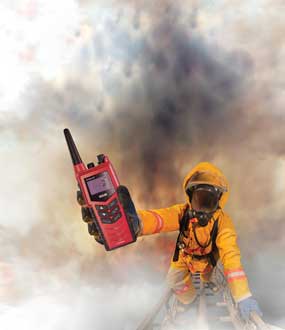 Cobham SATCOM’s
Cobham SATCOM’s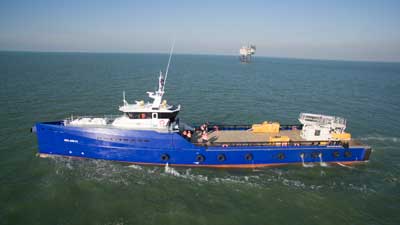 Photo courtesy: Damen
Photo courtesy: Damen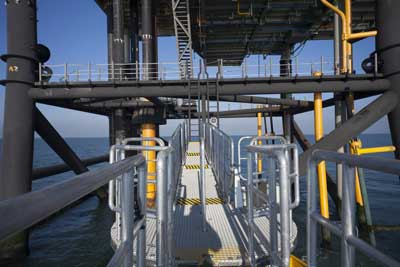 Photo courtesy: Damen
Photo courtesy: Damen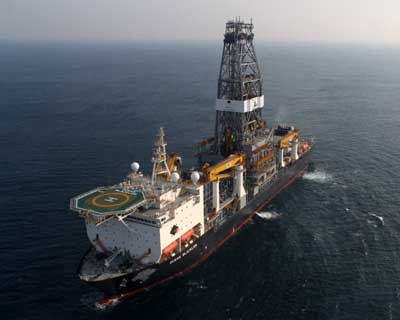 Diamond Offshore’s Ocean BlackLion. Photo courtesy: Diamond Offshore
Diamond Offshore’s Ocean BlackLion. Photo courtesy: Diamond Offshore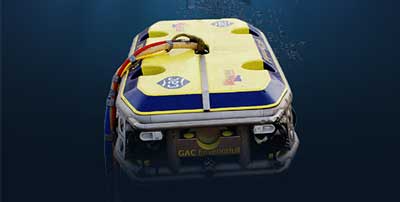 Photo courtesy: GAC
Photo courtesy: GAC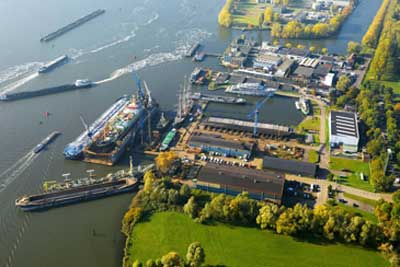 Damen Shiprepair Oranjewerf (DSO)
Damen Shiprepair Oranjewerf (DSO)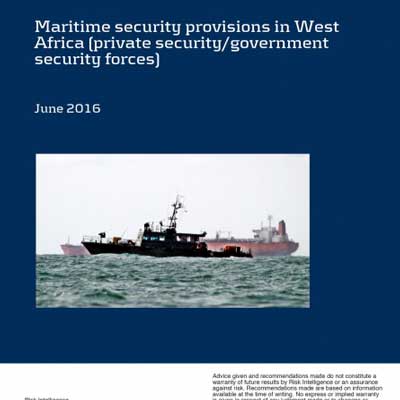 Maritime operations in West Africa are affected by threats from piracy and other maritime crime. It is very complex to get an overview of the different types of maritime security provisions that are legal in the countries throughout the region.
Maritime operations in West Africa are affected by threats from piracy and other maritime crime. It is very complex to get an overview of the different types of maritime security provisions that are legal in the countries throughout the region. 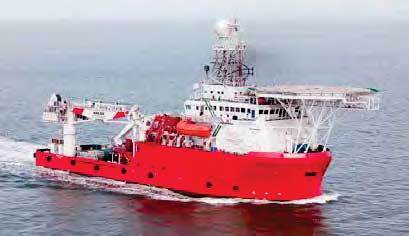 Photo courtesy: Mermaid Maritime
Photo courtesy: Mermaid Maritime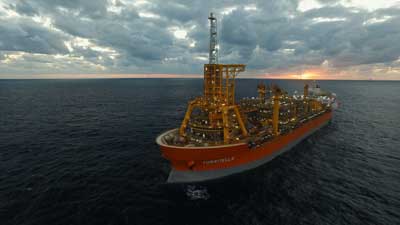 InterMoor
InterMoor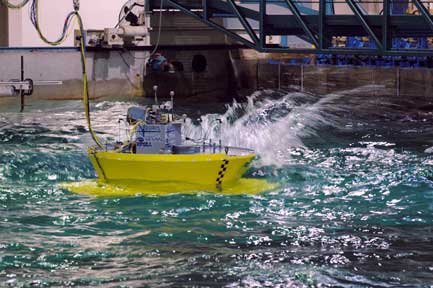 Photo credit: Sevan Marine
Photo credit: Sevan Marine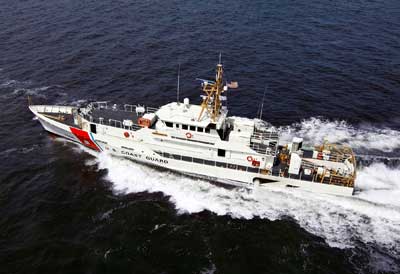 Sister Ship of the USCGC JOSEPH TEZANOS, USCGC MARGARET NORVELL operating in the U.S. Gulf of Mexico.
Sister Ship of the USCGC JOSEPH TEZANOS, USCGC MARGARET NORVELL operating in the U.S. Gulf of Mexico.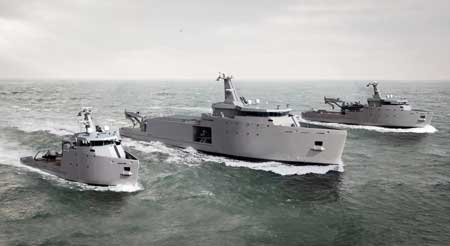 The introduction of flexible concepts which allow as many functions as possible to be included into a range of smaller vessels without reducing the effectiveness and capacity of the fleet while maintaining the benefits of modularity; this is Damen’s ambition with this new family of vessels. “To this end, plug-and-play containerised kit for many support tasks contribute considerable adaptability to a particular mission,” explains Damen Shipyards Gorinchem’s Principal Naval Advisor Jan van der Burg, a retired Vice Admiral of the Royal Netherlands Navy.
The introduction of flexible concepts which allow as many functions as possible to be included into a range of smaller vessels without reducing the effectiveness and capacity of the fleet while maintaining the benefits of modularity; this is Damen’s ambition with this new family of vessels. “To this end, plug-and-play containerised kit for many support tasks contribute considerable adaptability to a particular mission,” explains Damen Shipyards Gorinchem’s Principal Naval Advisor Jan van der Burg, a retired Vice Admiral of the Royal Netherlands Navy.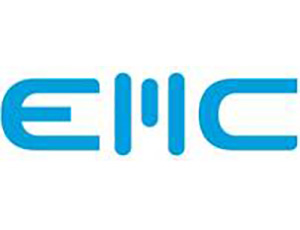 EMC
EMC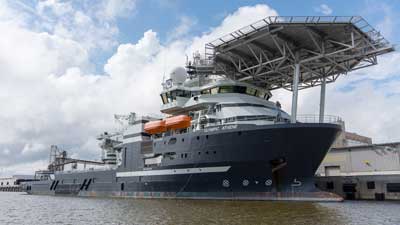 Olympic Athene. Photo credit: Olympic Shipping
Olympic Athene. Photo credit: Olympic Shipping